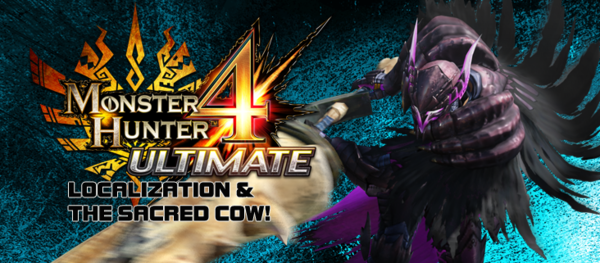
Monster Hunter 4 Ultimate: Localization & The Sacred Cow!
Jan 07, 2015 // Andrew Alfonso
Greetings everyone, and Happy New Year! If this is the first time you’re reading one of my posts, my name is Andrew Alfonso, Monster Hunter 4 Ultimate’s Localization Director. It’s been a while since I’ve written anything for Capcom Unity, but I’m super excited to give you some insight on the development of one of Capcom’s biggest titles this year. I know fans have been waiting patiently for this title, but the wait is going to be well worth it! This is the definitive version of Monster Hunter 4, and, on top of that, you’re getting a bunch of content that doesn’t even exist in the Japanese version.
To tell you a little bit about myself, I started at Capcom in 2007 as an editor, working on titles such as Mega Man Star Force , Devil May Cry 4, Ace Attorney, and Street Fighter 4. Eventually I became a translator and the lead on titles such as Super Street Fighter 4 and Street Fighter X Tekken. I’ve been a huge fan of Capcom games since I was young, and being able to work on franchises such as Street Fighter and Devil May Cry has been a dream come true for me. It was during my time at Capcom when I started playing Monster Hunter, beginning with Monster Hunter Freedom. I didn’t know a lot of people who played the game so I didn’t get far, but that changed with Freedom Unite, when I found a friendly group of people who helped me learn the ropes. From that point on I was hooked; I put in a good 300 – 400 hours in both Monster Hunter Tri and Portable 3 rd, and only (?) 200 hours into Monster Hunter 3 Ultimate, which I played solo until the end of G-rank. Soloing MH3U was okay until I got to…
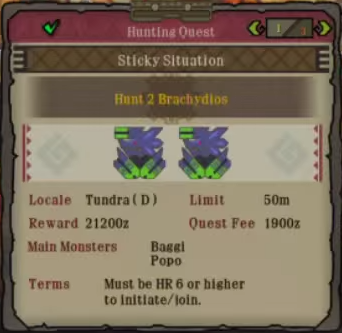
Yeah…that was not pleasant.
I’ve played a total of 600 hours across Monster Hunter 4 and 4G , with no intention of slowing down! It really is an honor to work on a series that I truly enjoy, and I can only hope I do the Monster Hunter team’s work justice with my work on the international version.
How It All Started
The last major title that I led was Monster Hunter 3 Ultimate, which was released about two years ago. We started planning the localization of Monster Hunter 4 Ultimate around September 2013, when the Japanese version of Monster Hunter 4 was released. We handled the localization of MH4U quite differently compared to MH3U, so before I start introducing our monsters, I wanted to touch upon that for a bit. I hope you don’t gloss over anything, but if you do, I won’t be offended. Not too much. Actually, I’ll be pretty bitter if you don’t read this. Maybe.
Now, I know a lot of fans have this idea that localizing a “simple” game like Monster Hunter should be easy. They say that there isn’t a lot of text, and you can just copy and paste stuff from the previous games and save time; you can wave a Rathian tail in the air and the game magically translates itself.
Well, let’s kill those misconceptions right here. This game has a lot of friggin’ stuff to localize. In fact, it has more text than titles such as Dragon’s Dogma and Ace Attorney. There was so much to translate that we flew a small army of translators to a remote island with only Microsoft Excel and an internet connection to get the job done.
I’m not exaggerating either. I have the receipts!
But if there were so many returning monsters in MH4U, why didn’t we just use existing translations for the relevant items, armor sets, and so on, you ask? Because we have standards, and they change over time. What was considered a good localization five or six years ago when Monster Hunter Freedom Unite was released may not be considered good now. When it comes to localization, companies like Nintendo, Atlus and Square-Enix are producing top-notch games, and if we want to keep our place at the table, we can’t have any sacred cows. Changing things for the sake of change is a bad idea, but holding on to something because that’s how it’s always been done is just as damning. As the Localization Director, I feel that if we can make things better, at the very least we need discussions about it to see if the end result is worth the effort.
Take for example, the names of materials from Monster Hunter Freedom Unite. Two returning monsters are Teostra and Kushala Daora, and after a hunt you could carve items such as “LthrTeostraTail” and “Str Daora Wing” from them. Now, I don’t know about you, but those names look…weird. A couple of words are abbreviated and spaces are missing between words. In Monster Hunter 3 Ultimate we came up with a new naming scheme that made things a lot easier to read, so we had to apply that to all of the returning items. Now you can carve a “Teostra Lash” and “Daora Fellwing,” which look and sound a lot better.
Under the Hood
Another thing we did with MH4U that we couldn’t do with MH3U is related to the UI and tutorials. We were able to tinker with them in ways that we weren’t able to do in the past. We consulted with MH4U director Kaname Fujioka and lead designer Yuya Tokuda about what we wanted to do for the western release and received their blessing to change the UI and tutorials in subtle ways that will make the experience smoother for players overseas. (I have a good two months of blogs planned, so somewhere down the line I’ll delve into these topics a bit more!)
During previous projects, the localization lead stayed with the rest of the localization team while handling a title, but nowadays the Localization Director joins the dev team for the duration of the project. The localization team and all of the dev teams are only separated by a couple of floors, but because so much communication is done verbally, not being physically present means you either don’t get the information you need, or you can’t see potential problems before they happen. Sitting with the team makes communication so much easier, which results in a better product. The Monster Hunter team also agreed that it would be a good idea for me to stay with the team as the Localization Director, and I think it really helped out in the long run.
Okay, so let’s talk monsters and your starting village!
The Hunter’s Mecca
The game begins with you off in Val Habar, a bustling settlement that attracts hunters far and wide, and comes complete with its own Gathering Hall. It should be obvious at first glance, but the team was aiming for something akin to a Middle Eastern marketplace or bazaar. When we were thinking about the name for this location, we felt it was a good fit but needed some tinkering to make it easier to say. Some suggestions that were thrown around were Balbary, Valvare, Valbar and Barbaary, but we thought splitting the name into two words would make it easier to say. Other than that point, this name doesn’t stray too far from the original Japanese term.
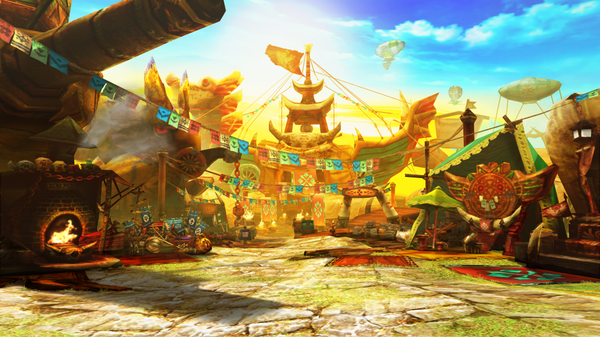
Welcome to Val Habar!
Gore Magala
The flagship monster of Monster Hunter 4 in Japan was the first to be localized into English, as the monster was scheduled to appear on select Uniqlo merchandise. This request came much earlier than the localization of the game, so we stuck with a Romanization of the original Japanese name, but I wanted to give the name some meaning to people who understand English. We proposed using Gore instead of the Romanized Goa to infer an evil, sinister monster…as if you couldn’t get that by just looking at the thing!
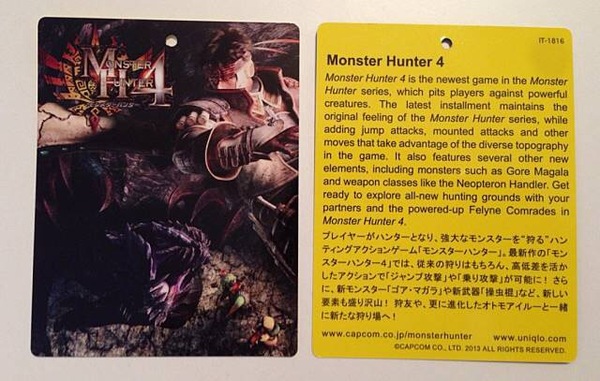
Gore Magala’s name was first created for use on Uniqlo merchandise.
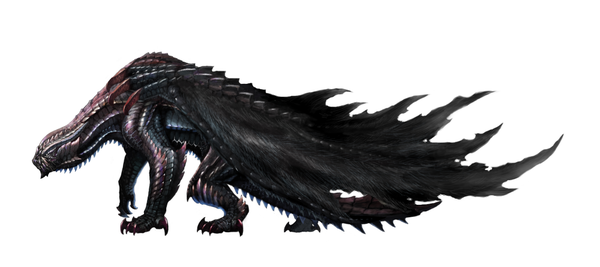
An illustration of Gore Magala referenced during localization.
When the localization of the game began, we began thinking of some new names; we liked the “Magala” part of the name (which translates loosely to “incarnation” in Aramaic), but tinkered around with it. In the end, we came back to the original name we proposed. It seemed to fit too well with the monster’s look. We did try to play around with the Magala name; we thought of names such as Espira Magala, which was based on the French word for spirit, but I think we just liked the original name the best so we left it as is.
Kecha Wacha
Like Gore Magala, Kecha Wacha was also localized into English way ahead of the actual localization of the game. We had to give this monkey-like monster a name for the demo version of MH4 that was to debut at Tokyo Game Show 2012. While the Monster Hunter team said we were free to change it to another name, this was another case where we liked the original name a lot. It’s really fun to say, it rolls off the tongue, and it has a playful sound to it. We also thought it matched the monster’s behavior very well – it’s named after a Balinese dance called Kecak and the Taiwanese word for whimsy. Although we thought of some other names, such as Lespina, a combination of Lendama (Estonian for fly) and Apina (Finnish for monkey), and Lycapex, those never got proposed because we liked Kecha Wacha way too much.
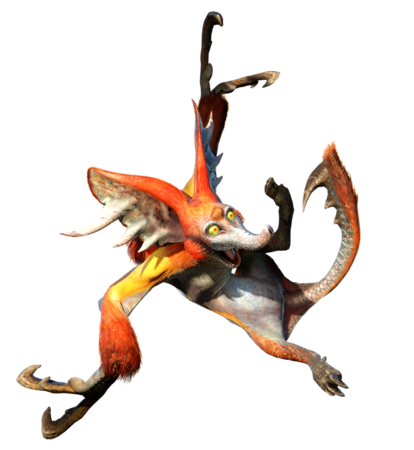
Ash Kecha Wacha
Up until Monster Hunter 3 Ultimate, we tried to give each subspecies their own unique moniker, but with so many monsters in the series, we’re running out of ways to describe them! As a general rule we try to name subspecies by color, but Monster Hunter 3 Ultimate saw a few monsters, such as Goldbeard Ceadeus and Baleful Gigginox, named after their characteristics or their status in the MH world. For the Kecha Wacha subspecies, we thought up a bunch of names and settled on three: Ash, Argent, and Ember.
Argent was based on the monster’s fur color and sounded a lot better than simply using gray. Ember was based on the monster’s attack element, Fire, and Ash was a combination of the monster’s color plus the attack element.
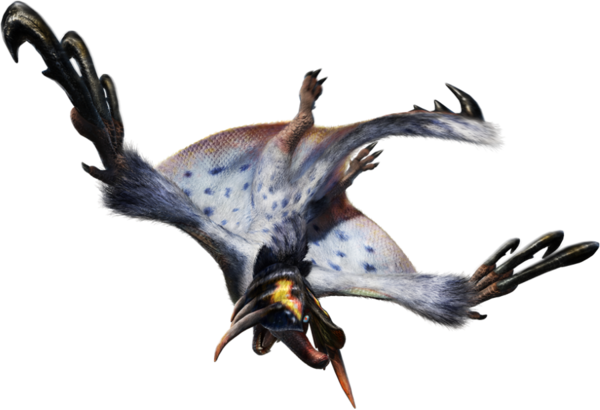
That’s it for now. If you’ve made it through this gigantic wall of text, thanks a lot for reading! I’ve got a lot of posts planned, and this time around we’ll touch upon not only the process of coming up with monster names, but other little tweaks that we did to the Western release of Monster Hunter 4 Ultimate to make it even better!
-
Brands:Tags:
-

Loading...
Platforms:
